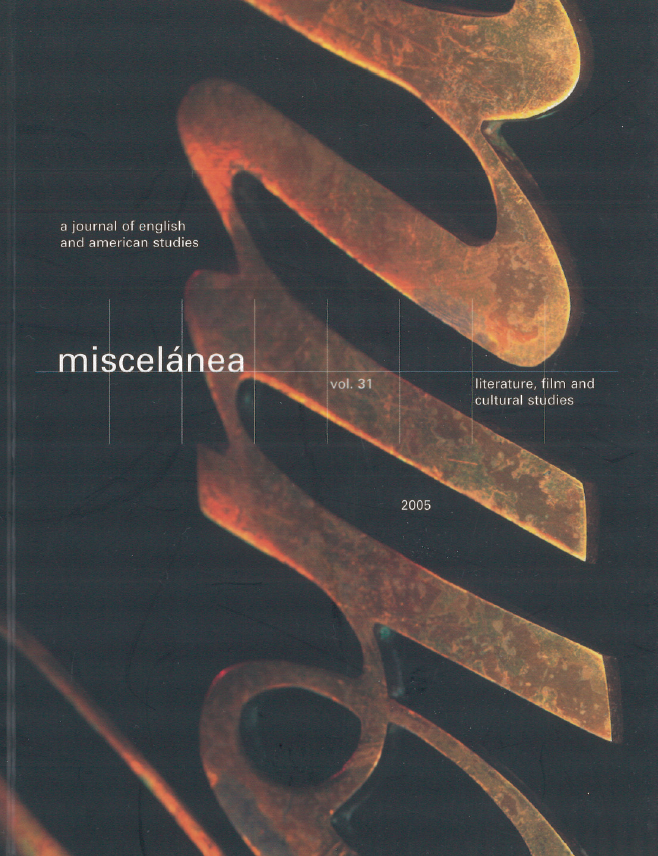Transfer and Linguistic Context in the Learning Process of English Negative Structures
DOI:
https://doi.org/10.26754/ojs_misc/mj.200510381Keywords:
transfer, second language acquisition, linguistic contextAbstract
This study looks at two areas related to the theory of linguistic transfer in L2 acquisition (Lado 1957; Odlin 1989): the context in which acquisition takes place, and the role of the learning strategy called avoidance. To this purpose the development of acquisition of the English negation system by Spanish EFL Students was compared with the findings of Cancino et al. (1978) by using measurement system based on Eckman’s (1985) Markedness Differential Hypothesis. Our results show that the different contexts in which acquisition took place lead to different uses of transfer and different sequences in the acquisitional stages which learners go through. Avoidance also seems to be a strategy which must be seriously taken into account in any evaluation of the role of transfer.
Downloads
References
ALONSO VÁZQUEZ, María Cristina. 2005. “Avoidance as a learning strategy”. Estudios Ingleses de la Universidad Complutense, 13: 67-84.
ALPTEKIN, Cem. 1981. “Sociopsychological and pedagogic considerations in L2 acquisition”. TESOL Quarterly, 15: 275-284.
BABEAR, Saleh I. 1988. An Investigation of the Avoidance Behaviour in Adult Second Language Learners. Ph. D. Thesis. Indiana University.
BUTTERWORTH, Guy A. and Evelyn M. HATCH. 1978. “A Spanish-speaking adolescent’s acquisition of English syntax”. In Hatch, E. M. (ed.).: 231-245.
CANCINO, Herlinda, Ellen J. ROSANSKY and John H. SCHUMANN. 1978. “The acquisition of English negatives and interrogatives by native Spanish speakers”. In Hatch, E. M. (ed.).: 207-230.
CLEMENT, Richard, Zoltán DÖRNYEI, and K. A. NOELS. 1994. “Motivation, self-confidence and group cohesion in the foreign language classroom”. Language Learning, 44: 417-448.
DIPIETRO, Robert. 1971. Language structures in contrast. Rowley, Mass.: Newbury House.
DÖRNYEI, Zoltán and Peter SKEHAN. 2003. “Individual Differences in L2 Learning”. In Doughty, C. J. and M. H. Long. (eds.).: 589-630.
DOUGHTY, Catherine J. and Michael H. LONG. (eds.). 2003. The Handbook of Second Language Acquisition. Oxford: Blackwell.
DUSKOVÁ, Libuse. 1969. “On sources of errors in foreign language learning”. International Review of Applied Linguistics, 7: 11-36.
ECKMAN, Fred. 1985. “The Markedness Differential Hypothesis: Theory and Application”. In Wheatley, Barbara. (ed.). Current Approaches to Second Language Acquisition. Proceedings of the 1984 University of Wisconsin-Madison Linguistics Symposium. Bloomington, Id.: Indiana University Linguistics Club: 3-21.
ELLIS, Rod. 1994. The Study of Second Language Acquisition. Oxford. Oxford U. P.
— 1997. SLA Research and Language Teaching. Oxford: Oxford U. P.
FRIES, Charles C. 1945. Teaching and learning English as a foreign language. Ann Arbor: University of Michigan Press.
GARDNER, Robert C. 1985. Social Psychology and Second Language Learning: The Role of Attitudes and Motivation. London: Edward Arnold.
GARDNER, Robert C. and Paul F. TREMBLAY. 1994. “On motivation, research agendas, and theoretical frameworks”. Modern Language Journal, 78: 359-368.
GARDNER, Robert C., Paul F. TREMBLAY and Anne-Marie MASGORET. 1997. “Towards a full model of second language learning: an empirical investigation”. Modern Language Journal, 81-344-362.
GASS, Susan M. and Larry SELINKER. (eds.). 1983. Language Transfer in Language Learning. Rowley, Mass.: Newbury House.
— 1992. Language Transfer in Language Learning. Revised edition. Amsterdam: John Benjamins.
GIBBONS, John. 1985. “The silent period: an examination”. Language Learning, 35: 255-67.
GUNDEL, Jeanette K. and Elaine E. TARONE. 1983. “Language transfer and the acquisition of pronominal anaphora”. In Gass, S. M. and L. Selinker. (eds.).: 281-296.
JARVIS, Scott and Terence ODLIN. 2000. “Morphological type, Spatial Reference and Language Transfer”. Studies in Second Language Acquisition, 22: 535-556.
HATCH, Evelyn M. (ed.). Second Language Acquisition: A Book of Readings. Rowley, Mass: Newbury House.
HYLTENSTAM, Kenneth. 1987. “Markedness, language universals, language typology, and second language acquisition”. In Pfaff, Carol. (ed.). First and second language acquisition process. Cambridge, Mass.: Newbury House: 55-78.
KELLERMAN, Eric. 1977. “Towards a characterisation of the strategy of transfer in second language learning”. Interlanguage Studies Bulletin, 2: 58-145.
KRASHEN, Stephen D. 1982. Principles and Practice in Second Language Acquisition. Oxford: Pergamon.
LADO, Robert. 1957. Linguistics across cultures. Ann Arbor, University of Michigan Press.
LARSEN-FREEMAN, Diane and Michael H. LONG. 1991. An Introduction to Second Language Research. London: Longman.
LUKMANI, Y. 1972. “Motivation to learn and language proficiency”. Language Learning, 22: 261-273.
NEFF, JoAnne, Juana M. LICERAS and Lourdes DÍAZ. 1997. A Parametric Perspective of EFL Acquisition in Institutional Contexts. Madrid: Universidad Complutense de Madrid.
ODLIN, Terence. 1989. Language transfer: Cross-linguistic influence in language learning. New York: Cambridge U. P.
ODLIN, Terence. 2003. “Cross-Linguistic Influence”. In Doughty, C. J. and M. H. Long. (eds.).: 436-486.
ROBINSON, Peter. 2003. “Attention and Memory during SLA”. In Doughty, C. J. and M. H. Long. (eds.).: 631-678.
RUTHERFORD, William E. 1983. “Language Typology and language transfer”. In Gass, S. M. and L. Selinker. (eds.).: 358-370.
RUTHERFORD, William E. (ed.). 1984. Language universals and second language acquisition. Amsterdan: John Benjamins.
SAVILLE-TROIKE, Muriel. 1988. “Private speech: evidence for second language learning strategies during the silent period”. Journal of Child Language, 15: 567-90.
SCHUMANN, John H. 1979. “The Acquisition of English negation by speakers of Spanish: a review of the literature”. In Andersen, R. (ed.). The Acquisition and Use of Spanish and English as First and Second Languages. Washington DC: TESOL: 3-32.
— 1986. “Research on the acculturation model for second language acquisition”. Journal of Multilingual and Multicultural Development, 7: 379:392.
SELINKER, Larry. 1972. “Interlanguage”. International Review of Applied Linguistics, 10: 209-231.
SELINKER, Larry. 1992. Rediscovering Interlanguge. London: Longman.
SPOLSKY, Bernard. 1969. “Attitudinal aspects of second language learning”. Language Learning, 19: 271-285.
WEINREICH, Uriel. 1953. Languages in Contact. The Hague: Mouton.
ZOBL, Helmut. 1983. “Markedness and the projection problem”. Language Learning, 33: 293-313.
ZOBL, H. 1986. “Word order typology, lexical government and the prediction of multiple, graded effects in L2 word order”. Language Learning, 36: 159-183.
Downloads
Published
How to Cite
Issue
Section
License
Copyright (c) 2005 María Cristina Alonso Vázquez

This work is licensed under a Creative Commons Attribution-NonCommercial 4.0 International License.


